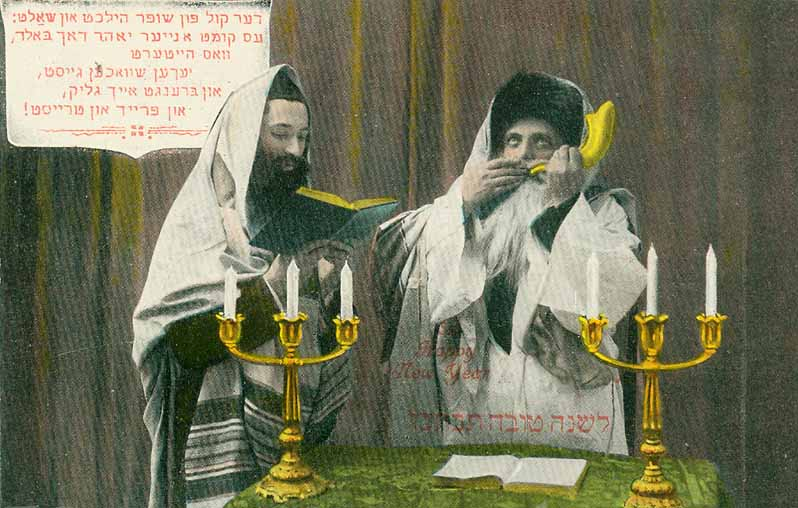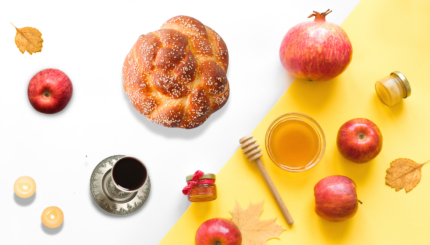On Rosh Hashanah, Jews greet one another in person with warm wishes for the new year: “Shana Tova” (Happy New Year), “Chag Sameach” (Happy Holiday), “Gut Yuntif” (Happy Holiday). But there is also a long tradition of sending new years’ greetings through the mail.
The tradition of sending Rosh Hashanah postal greetings probably dates to the 14th century, but it took off after the invention of postcards in the late 1860s. An inexpensive way to send quick greetings, postcards quickly became a popular mode of communication. They became a common way to send short greetings, especially on holidays. The fashion of sending postcards hit a peak just before the first World War.
In the early 20th century, Rosh Hashanah postcards, sent primarily by Jews in Europe and the United States, were usually composed in Yiddish and called shone-toyves cards (Yiddish for “a good year”). They carried images of Jewish holiday celebrations, lifecycle events, biblical scenes, notable rabbis, and more. Rosh Hashanah postcards may have been particularly popular during this time because there was so much immigration to America and families were often separated by very long distances.
Today, Jews continue to send Rosh Hashanah greetings cards in every available medium. In addition to postcards, there are folded cards that come in envelopes, e-cards, text messages, emails, and memes used on all social media platforms to send loved ones and friends new years greetings.
With your help, My Jewish Learning can provide endless opportunities for learning, connection and discovery.



